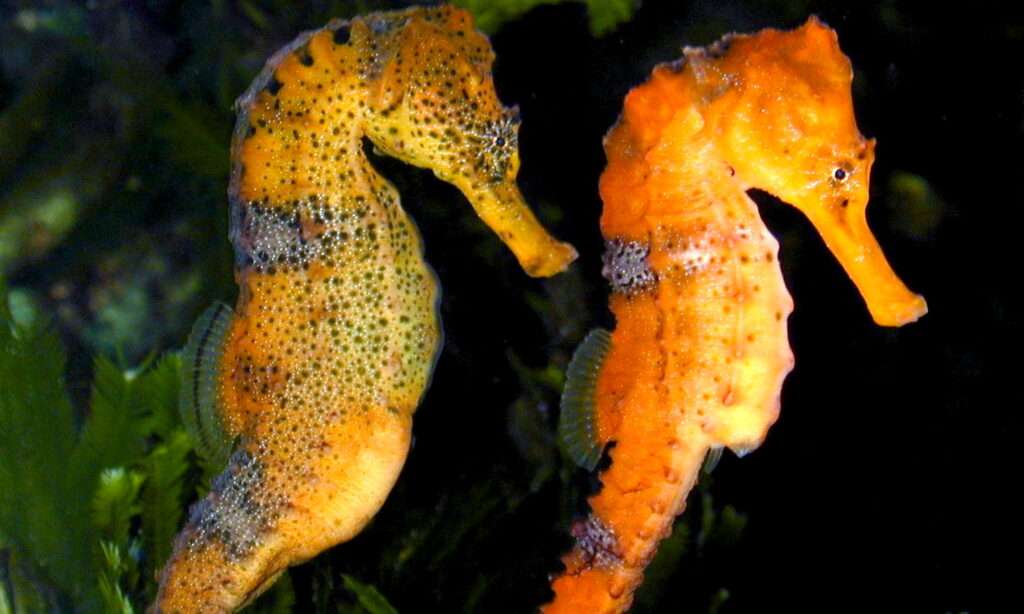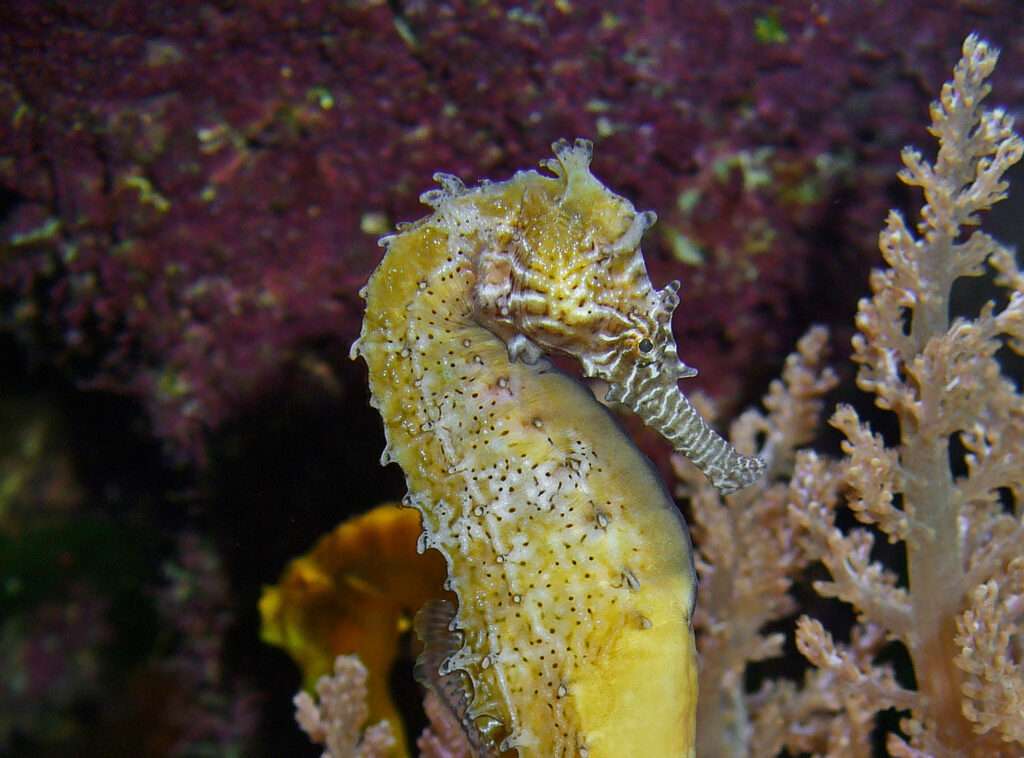
This little fish has a smoother surface than some of its seahorse relatives, yet it still exhibits a range of colors and has the capacity to fast alter its color for camouflage. Poor swimmer, it likes to ambush small prey from a safe hiding place amid seagrass, mangroves, or gorgonian coral, snatching them up in its toothless snout in a matter of seconds. The male brings the embryos to term in his brood pouch, and they have intricate courtship and bonding rituals. They are lifelong partners. These long-nosed seahorses have a length of nearly 7 inches and a lifespan of one to four years. They are gathered by humans for the aquarium trade or traditional medicine, despite the fact that they have few predators due to their concealment and bony-plated body.
Traits
The longsnout seahorse, also known as the slender seahorse, has a long, thick snout and a narrow body that reaches a height of around 17 cm. Seahorses lack pelvic and caudal fins, but they do have a propelling dorsal fin and two tiny pectoral fins that they use to steer and balance their bodies when swimming. Immediately below the final trunk ring, there is also a little anal fin. The coronet is massive and coiled at the top of the head but is rather low. The only exception being the eye spines, which are typically rounded low tubercles without any spines. Males often have a brood pouch and longer tails than females. The average size for both sexes is similar.
Typically, a cat’s coloration runs from yellow to red, orange, brown, and black; it is heavily speckled with tiny brown spots on the body and smaller white dots around the tail. They may have saddles on the back and sides of the body that are lighter in color.

Food
Seahorses only consume live prey, and their main means of hunting is through vision. This feeds constantly during the day, even at dawn and night. The long-nosed seahorse is said to be an ambush predator who doesn’t often go after prey. Males who are pregnant typically eat more frequently than females and non-pregnant males. Seahorses grab prey by sucking it up. When in close contact to prey, it extends its neck forward and, by widening its mouth, generates a suction force that pulls the prey up into its mouth. Copepods, marine nematodes, and carids are among the longsnout seahorse’s frequent prey.
Habitat
They may also be found off North Carolina and the southern United States. This is typically regarded as a rare species, yet it may be prevalent in specific areas. It is typically spotted connected to mangroves, seagrasses, or gorgonians, although it can sometimes be seen swimming freely in the middle of the ocean or in close proximity to sargassum that is afloat.
This species stops eating and swimming during the night, wrapping its tail around a holdfast and staying there until dawn. The dorsal and pectoral fins of seahorses rapidly undulate as they swim. This seahorse can be found in depths of 0 to 55 meters, with smaller individuals living in shallower environments. It is common for male longsnout seahorses to have a smaller home range than females; this is assumed to be caused, at least in part, by the brood pouch’s restriction of mobility.
Importance to Humans
One of the most popular species of Brazilian marine ornamental fish exported is the longsnout seahorse, which is regarded as a key species in the aquarium trade. Additionally, it is frequently gathered for religious uses, as well as for souvenirs and folk medicine. Additionally, trawl nets and other non-selective fishing methods frequently snag this seahorse as bycatch.
Table





